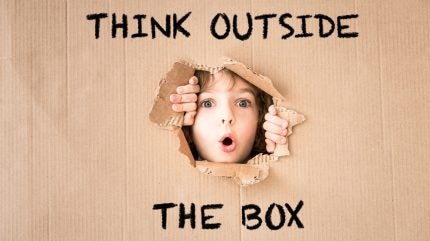
In an era where consumer attention is fleeting, and environmental concerns are paramount, the packaging industry is undergoing a remarkable transformation. Brands are increasingly embracing unconventional packaging designs and materials to captivate consumers and promote sustainability.
This evolution not only challenges traditional norms but also paves the way for a more innovative and eco-friendly future.
Chaos packaging: capturing consumer attention through cognitive dissonance
In the quest to stand out on crowded shelves, companies are adopting ‘chaos packaging’—a strategy that involves using unexpected and whimsical designs to create cognitive dissonance and capture consumer interest.
For instance, Flo, a menstrual health company, packages tampons in ice-cream tubs, tapping into the common craving for sweets during menstruation and extending the product’s visibility beyond the typical brief glance.
Similarly, other brands have experimented with placing sunscreen in whipped-cream cans or using unconventional shapes and graphics to differentiate their products. While this approach can drive significant social media buzz and consumer engagement, it carries risks, such as potential safety concerns or consumer confusion.
Established brands often tread cautiously, maintaining familiar packaging to ensure consistency, whereas startups enjoy more flexibility to experiment and disrupt the market.
Sustainable innovations: redefining packaging materials
Beyond eye-catching designs, the industry is witnessing a surge in sustainable packaging innovations aimed at reducing environmental impact.
Edible packaging, for example, utilizes materials like seaweed or rice to create containers that consumers can safely eat or compost, eliminating waste altogether.
Minimalistic design strategies focus on reducing material usage, embracing the ‘less is more’ philosophy to create elegant, waste-conscious packaging.
Reusable packaging transforms containers into keepsakes or functional items, encouraging consumers to repurpose them rather than discard them.
Upcycling repurposes discarded materials, such as reclaimed wood or textiles, into unique packaging solutions, adding authenticity and reducing waste.
Plant-based plastics, derived from renewable resources like corn or sugarcane, offer a greener alternative to traditional petroleum-based plastics, lowering carbon footprints and reliance on fossil fuels.
Unconventional materials: exploring new frontiers in packaging
The exploration of unconventional materials is further revolutionizing packaging design. Mushroom mycelium, the root structure of fungi, can be grown into custom shapes, providing biodegradable and compostable packaging options.
Seaweed-based packaging offers an edible and biodegradable alternative to plastic, suitable for food products and reducing reliance on synthetic materials.
Recycled fishing nets are being transformed into bottles and containers, addressing ocean pollution and promoting circular economy practices.
Cow manure has been innovatively used to create biodegradable pots and packaging corners, turning agricultural waste into valuable resources.
These materials not only reduce environmental impact but also introduce consumers to new textures and experiences, enhancing the overall product appeal.
As brands continue to ‘break the mould’ with unusual packaging, they not only differentiate themselves in a competitive market but also contribute to a more sustainable and environmentally conscious world.
By embracing chaos packaging, sustainable innovations, and unconventional materials, the packaging industry is set to captivate consumers and promote eco-friendly practices for years to come.



